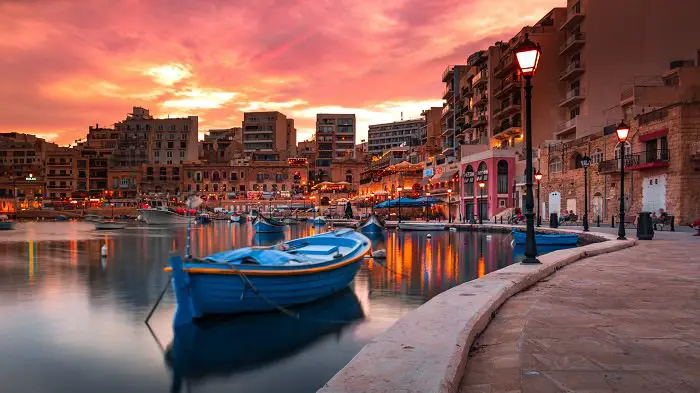Aside from its natural sceneries, Malta’s architecture is also one of the country’s primary attraction points. Located at the heart of the Mediterranean Sea, the island nation of Malta got its influence from its neighbouring nations. This can be seen in the country’s architectural masterpieces. Yes, it has its own native culture. But it is really the blend of foreign and vernacular style that makes the Maltese structures stand out.
In this post, we’ll trace how Malta transitions from its old buildings to the new architectural works as seen in its townhouses, temples, churches, and commercial complexes. And we’ll focus on three main points – inspiration, design, and function.

Inspiration
The design culture of Malta has its roots from its earliest settlers, such as the Moors, French, Romans, and British. Its townhouses, public spaces, and religious structures speak about the traditions and belief system of its previous rules.
The earliest buildings in Malta followed the basic and plain building inspiration, which is daily life with the family and community. The turning point of Maltese architecture started during the occupation of the Knights of St. John in 1530. During this time, European structural designs were introduced massively in Malta. And this fuelled the first building boom in the country.
One significant example is the capital Valletta, which was established by the Order of St. John in 1566. The town’s buildings had impressive fortifications, especially those around the Grand Harbour.
The Baroque movement gave the most enduring impact on the architecture and art of Malta. And this happened during the nation’s second building boom in the 17th century. During this period, engineers updated the plain Mannerist style structures into ornate Baroque style buildings.
During the British occupation, Malta also picked up the English classism. This can be seen in most of the buildings in Mtarfa, such as the St. Paul’s Anglican Cathedral and the town’s three cemeteries. Houses in Sliema had Victorian features, such as Art Deco, Art Nouveau ornamentation, and bay windows.
Today, Malta’s architectural inspiration comes from the integration of modern and vernacular style. Plus, the influx of tourists, travelling entrepreneurs, and remote workers also inspired builders to make structures that are more suitable for both work and leisure.
Design and Materials
As a small country, Malta’s builders have to design buildings with sustainability and space-efficiency in mind. Throughout the years, limestone remains as the main material used for its high availability. This material also gives buildings its stand out honey colour.
Maltese temples, Malta’s earliest architectural forms, were built with the same basic design. Temples and other religious structures had a central corridor that led to two or more ellipsoidal chambers. The chambers led to small altar apse.
Primitive builders used great blocks of stones to construct the outer shells of walls. The interior walls were made of well-cut slabs or stacked rough coralline blocks. Indoor areas typically had plasters and red ochre paintings. This design evolved and included carved altars, simple patterns, steps, and friezes with farm-inspired details.
Malta’s pre-baroque structures got its design inspiration from its Sicilian builders. Homes, for instances, picked up the ‘Chiaromonte’ style with pointed door-frames and windows.
Maltese architecture also took an interesting turn during the Roman occupation. This can be seen in a Roman Domus, an archaeological site that featured a villa complex in the boundary between Rabat and Mdina. In this structure, Malta’s architecture started to have decorative mosaic floors, classical statues, and marble colonnades.
Today, Malta’s commercial and residential complexes exude an ultramodern design that integrates elegance, sustainability, and technology. The integration of smart home or IoT features is evident. And recent buildings typically had areas that feature the surrounding landscapes or cityscapes.
Function and Purpose
As with all other projects, Maltese structures were made to meet the needs of the time and the demands of the people. Also, structures were made in consideration of other factors, such as land area, traditions, and the economy.
Did you know that the world’s oldest free-standing structures made of boulders are in Malta? You can see these Megalithic architectural masterpieces if you visit the temple complex of Ggantija. The temples were built between 3600BC to 700BC and were made for religious purposes. Up to this day, the temple complex is believed to have been created by giants as it features boulders. But the truth is that long before Malta became a digital hub, the country was also the home of primitive people who used nothing more than the crudest tools (e.g., boulders and limestone) for construction.
Some structures were lost to fire and earthquakes, such as in 1693, and were never recovered. But some survived the test of time. These old buildings were rebuilt and repurposed, which is the case of the Biagio Steps building. It used to be a part of the Knights’ fortifications. But it was converted into a fortress-building that features an interactive museum.
Recent residential and commercial property development projects are focused on supporting Malta’s growing digital economy and tourism sector.
Whether you’re an architecture aficionado, entrepreneur, student, or tourist, Malta’s architectural masterpieces are worth-learning. This could be your way of grasping the beauty of the country fully and maximizing your stay here in this beautiful island nation.